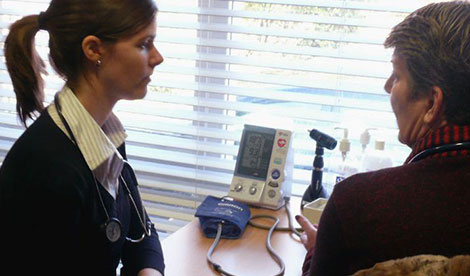

Blog

Raw deal for GP registrars should be no deal
Monday July 6, 2020
Like all jobs, being a GP registrar has its pros and cons. However, in the 21st century, the cons should not be related to basic industrial conditions.
Hospital-based doctors in training (DiTs) gain experience across the different areas of medicine by rotating through hospitals and health services. They rotate every 3-6 months but (mostly) still have the same employer, which allows industrial entitlements such as sick leave, annual leave and maternity leave to transfer over.
GP registrars, however, are employed by individual practices, many of which are small businesses and to get the exposure required to train as a GP, we rotate every 6-12 months. With each rotation, our accruals for sick leave and annual leave begin all over again, so don’t get sick or plan to take holidays at the start of a rotation. Should you want paid maternity leave – you’re dreaming!
To make things worse, it is difficult to access the federally legislated Keeping in Touch days. During maternity leave, your provider number is “suspended” and therefore, whilst you could attend courses, the option of seeing patients, maintaining basic skills in history and examination, and using everyday technology is not easily accessible.
A recent article by Australian Doctor showed GP registrars’ base pay is less than an intern in six out of eight states, and less than a third-year graduate in all states.1
In return for this pay cut, we receive greater employment flexibility, with the independence to choose who, where and when we work.
But when you’re already taking a significant pay cut with 10 times the responsibility, the last thing you can afford is losing entitlements too. Whilst there is potential to increase your earnings through billings, this is prohibitive when you are learning a new system and trying to focus on developing clinical skills to get you through exams.
Compared to our hospital colleagues, GP registrars get a raw deal. We don’t receive any paid study leave to help us prepare for exams. Our exam fees, in the vicinity of $12,000, are well out of proportion to our base level of pay and in excess of our physician colleagues (around $8,000).
The current employment guidelines for GP registrars (the NTCER) is even more outdated than the Medicare rebate system. Whilst there is no easy solution to this, something needs to be done to protect our GP registrars who take on a huge proportion of the Australian population’s primary care, thereby saving the government millions of dollars in preventable and costly hospital admissions. The least of which is to match basic employment entitlements such as leave.
Every doctor would have some interaction with General Practice and without this, the impact on
hospitals would be catastrophic. It’s about time we rallied behind our GP colleagues and supported improved industrial conditions and access to transferable leave entitlements.
References: 1. O’Rourke G. GP registrars vs interns: How their salaries compare. Australian Doctor [Internet]. 2020. Available at https://bit.ly/2YEMdEu

